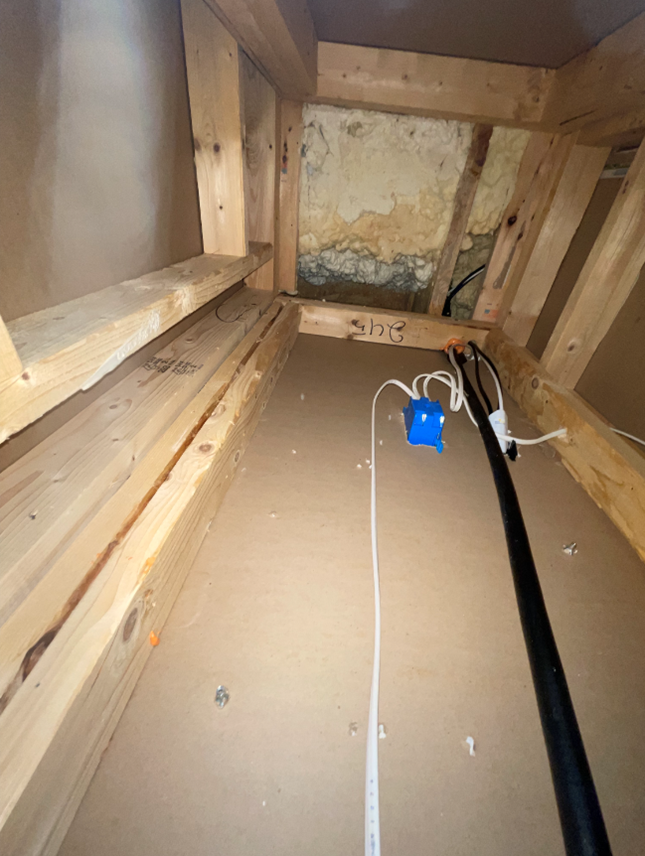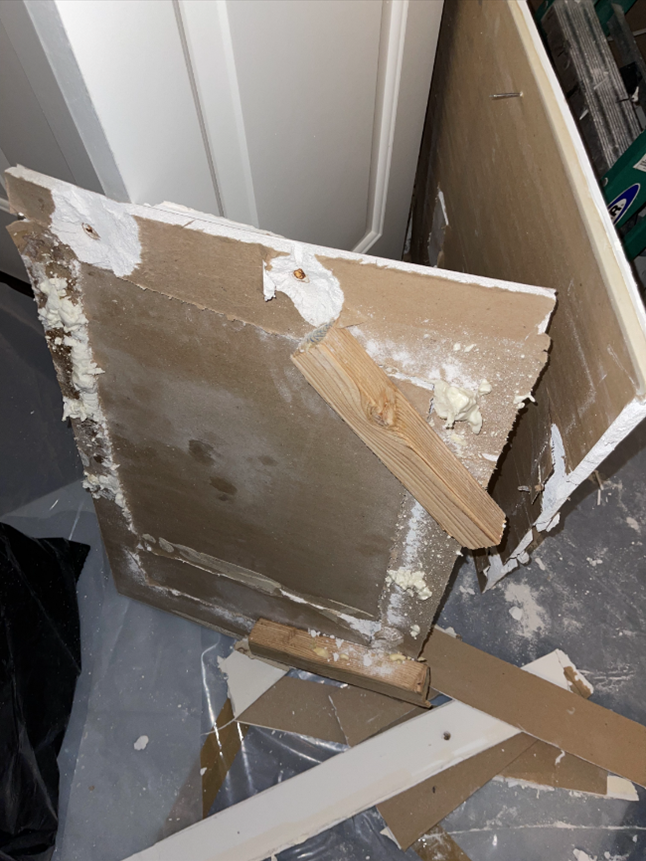Mold Remediation McLean, VA
In our line of work customers often have parting words after we have helped them restore their home and household goods; “you guys were great and I hope I never have to see you again”. Which, on the surface, sounds rather blunt and hurtful. Once you realize what they are really trying to say is “we don’t want to have another loss” it’s profoundly true. We recently performed mold remediation for a customer who had us twice at a townhouse he owned in Fairfax and just recently at the single-family home he bought in McLean.
How does Mold Grow in a home?
Usually, mold growth can be attributed to a particular occurrence. For example, a plumbing failure that was slow to develop (e.g., a pipe in a wall, a slow leak in a shower). Even in those situations, it may take weeks or even months before the mold becomes visible in the living space. Mold can thrive and proliferate on the backside of the drywall or baseboards for long periods of time unseen until the odor indicates a problem.

Mold may also just ‘show up’, maybe first detected by odor (mold has a medicinal odor) and the cause may be undetermined. Sometimes there is no obvious source of water intrusion. In some of the most heavily contaminated spaces we have encountered, mold simply grew due to environmental factors. Summers in northern Virginia can be brutally hot and humid. The following are common environmental conditions that are conducive to microbial growth, particularly in summer months:
- Homes, rooms, levels that are unoccupied
- Non-functional air conditioning
- No ventilation/stagnant air
- Dusty – dust is an excellent food source for mold
- Dark – mold prefers dark to light
- Below grade basements – ground moisture may transmit through foundation walls
Can Humidity Cause Mold Growth?
The second mold problem at the townhouse was a real challenge to diagnose. Small specs of mold growth were noticed on the ceiling inside a closet (dark, stagnant air) yet, no plumbing lines were in the vicinity, above or below. It was on the third floor (obviously above grade). The source of the moisture which led to the mold growth remained a mystery. We removed the contaminated drywall and began searching for clues as to why the mold began to grow.
We removed the ceiling and observed that the back of the drywall ceiling was damp and starting to support microbial growth. Above the ceiling between the floor joists, someone had bought a can of spray on expandable insulation and sprayed insulating foam in the vicinity of the metal ductwork.
The space between floors, sometimes referred to as interstitial space, is not conditioned (directly heated or cooled) however conditioned areas above and below transfer energy to the cavity and are often sufficient to avoid huge swings in temperature.During the summer months, hot humid air can convey from the exterior into these interstitial (unconditioned) spaces. The cool air created by the air conditioner passing through the duct interior cooled the duct exterior. The spray foam, though not thoroughly applied to area of the duct, created additional insulation preventing the conditioned air from the floor below to transfer into the joist cavity.

Mold Inspection and Remediation
The warm humid air surrounding the duct caused moisture to condense as droplets of water on the cool metal duct exterior. Eventually dripping through gaps in the spray foam and allow just enough water to keep the backside of the drywall damp for long period of time, long enough to support microbial growth. We simply removed the spray foam and allowed the house to ‘fix’ itself.
The spray foam might have worked had it been applied directly to the duct. Foil backed fiberglass insulation is often seen as a duct wrap in residential basements. But keep in mind that basements are usually below grade and most times generally cooler that the upper floors to begin with. This is also the reason that most ductwork installed nowadays in attics is made of a wire coil covered in a bendable but durable plastic called ‘flex duct’. Plastic is not as responsive as metal to temperature changes and therefore unable to condense moisture.
Everyone wants to conserve energy and hopefully save money. Sometimes the most cost-effective method is not the most efficient.
You may also be interested in: